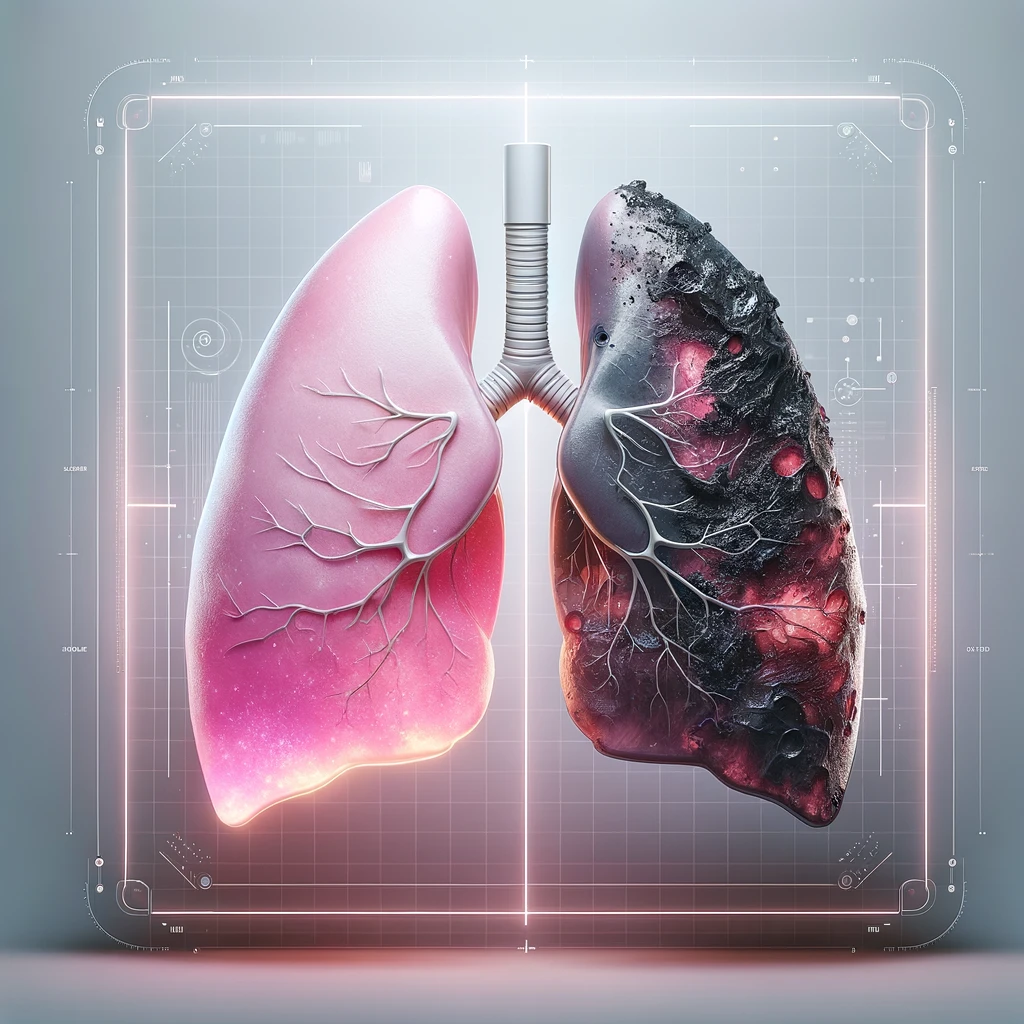Optimal breathing and efficient muscular endurance are essential for sport. Yet tobacco consumption, whether in the form of conventional cigarettes or electronic cigarettes, continues to compromise these fundamental pillars of sporting performance. This habit, often adopted by smokers convinced that it has little influence on their physical activity, acts as a real brake.
The figures are alarming: every year, millions of deaths worldwide are attributed to smoking, seriously affecting not only people’s health, but also their quality of life. Particular attention needs to be paid to prevention, especially in the sporting world where the effects of smoking are felt with every effort or performance .
The essential role of respiratory capacity in sport

Why respiratory capacity is crucial to sports performance
Respiratory capacity plays a key role in any sport, as it enables muscles to receive the oxygen they need to produce energy. When smokers continue to smoke regularly, their lungs are progressively damaged, considerably reducing this capacity and their ability to engage in physical activity.
Even an occasional cigarette can be enough to cause a temporary drop in oxygenation, particularly noticeable during prolonged exertion. In team or individual sports requiring high levels of endurance, such as running or swimming, this drop in lung efficiency means results fall short of expectations.
The influence of age and physical condition on respiratory capacity
Among young athletes, the effects of tobacco on the lungs are less visible in the short term, but their early consumption of cigarettes or electronic products has serious long-term repercussions. A study carried out in France showed that over 30% of young people aged 15 to 25 claim to have tried smoking beforetaking up a sporting discipline.
As we age, this lung damage accumulates, increasing the risk of developing chronic respiratory diseases. It is therefore crucial to promote active prevention to raise awareness of these dangers from an early age.
You may also be interested in this article: Does smoking increase the risk of developing type 2 diabetes?
The effects of smoking on respiratory capacity
Reduced muscle oxygenation
Smoking just one cigarette before a sports session can significantly reduce the supply of oxygen to the muscles. This effect is compounded by nicotine, which acts as a vasoconstrictor, limiting blood flow and further reducing tissue oxygenation.
Smokers who continue to smoke while engaging in regular physical activity often experience a rapid decline in performance. This phenomenon, combined with the long-term effects of smoking, is particularly problematic in endurance sports, where the slightest drop in lung efficiency leads to more rapid fatigue.
Inflammation and obstruction of the respiratory tract
Irritation caused by smoke from cigarettes and electronic devices leads to inflammation of the respiratory tract, making every effort harder to bear. Regular smoking, even in moderation, leads to an accumulation of mucus in the lungs, increasing the risk of respiratory infections.
In athletes, these effects are felt even more keenly, as even the slightest alteration in respiratory capacity translates into reduced performance. It’s important to remember that airway obstruction is often the first sign of more serious complications, such as chronic obstructive pulmonary disease (COPD), responsible for many deaths every year.
Electronic cigarettes: a truly safe alternative?
Although often perceived as a less harmful alternative to traditional cigarettes, the electronic cigarette is not without consequences for smokers‘ health, and in particular their respiratory capacity. Recent studies show that the aerosols produced by these devices contain toxic substances, such as formaldehyde and acrolein, which irritate the respiratory tract and increase the risk of lung inflammation.
Unlike conventional cigarettes, e-cigarettes do not burn. However, the nicotine contained in e-liquids maintains dependency, while causing vasoconstriction of blood vessels, limiting muscle oxygenation and slowing post-exertion recovery.
Sportsmen and women using electronic cigarettes frequently report symptoms similar to those of traditional smokers: a persistent cough, reduced respiratory capacity and a sensation of breathlessness, even during moderate exertion. A 2021 study by the American Journal of Respiratory and Critical Care Medicine found that regular e-cigarette users had a 20% increased risk of developing chronic lung disease compared with non-users.
In a sporting context, these impacts translate into reduced performance, slower recovery and an increase in injuries linked to insufficient oxygenation of the muscles.

Long-term consequences for sports smokers
Permanent impairment of lung capacity
Prolonged cigarette smoking, combined with intense exercise, exacerbates damage to the pulmonary alveoli. This reduces the lungs’ capacity to eliminate carbon dioxide, increasing oxidative stress during physical activity.
Athletes who continue to smoke despite warning signs are particularly exposed to the risk of chronic diseases, affecting not only their performance, but also their life expectancy. In France, studies show that around 10% of athletes who have smoked for more than 10 years suffer serious respiratory complications before the age of 40.

Delayed muscle recovery
Delayed recovery is one of the most visible effects of smoking in athletes. By reducing the supply of oxygen to damaged muscles after exercise, smoking slows the regeneration of muscle fibers and increases the risk of injury.
Frequent exertion without adequate recovery leads to a drop in performance and an increased risk of overtraining. Recent figures show that athletes who smoke are 20% more likely to develop chronic muscular inflammation than non-smokers.
Smoking cessation: an asset for athletes
Why quitting is essential to regaining breathing capacity
By quitting smoking, athletes can reverse some of the damage caused by tobacco. Within the first few days, carbon monoxide in the blood disappears, improving muscle oxygenation and respiratory capacity.
Complete cessation also reduces the risk of chronic disease and improves muscle recovery. Studies show that, after one year’s cessation, ex-smokers recover up to 80% of their initial lung capacity.
A gentle, natural way to quit smoking
The auriculotherapy laser method offers an innovative and effective solution for quitting smoking, without the use of chemicals. Inspired by acupuncture, this technique helps reduce cigarette cravings by acting on reflex points in the ear.
Athletes who opt for this method report a rapid improvement in performance and a significant reduction in withdrawal-related stress. What’s more, this natural approach is perfectly suited to people who engage in regular physical activity.
Conclusion
Tobacco, whether consumed in the form of conventional or electronic cigarettes, is a major obstacle for any athlete seeking to improve performance. The negative effects on breathing, recovery and sporting results are undeniable, increasing the risk of serious illness and reducing life expectancy.
For athletes, quitting smoking is not just a matter of prevention, but a necessity to ensure a successful sporting future. Thanks to natural methods such as laser auriculotherapy, it’s possible to quit smoking for good and regain full respiratory capacity.
Getting back to optimal breathing means excelling in your sports while protecting your long-term health.
If you’d like to quit smoking for good, thanks to a little-known method, visit our website https://www.mylasertabac.com to find out more aboutanti-smoking and addiction lasers.







